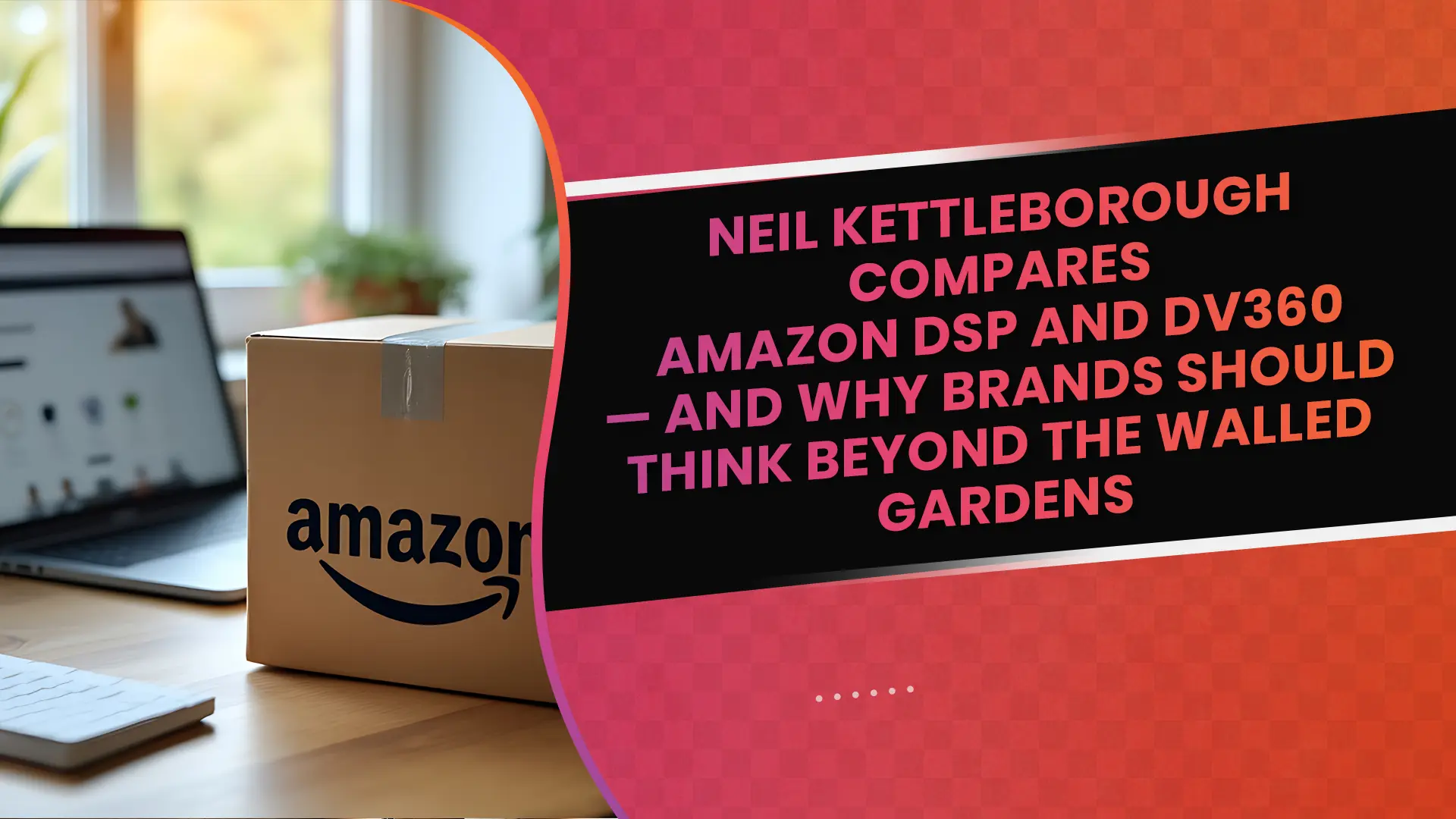In the dynamic world of programmatic advertising, selecting the right demand-side platform (DSP) is crucial for optimal performance. While a DSP can assure reach, scale, and automation, not every DSP solution can provide the commerce-focused results and verifiable return on ad spend (ROAS) that the level of advertising demands today.
For two of the biggest platforms on every marketer’s list — Amazon DSP and Google DV360 (Display & Video 360)—the two often get lumped together as interchangeable options. But is it truly fair to think of them interchangeably?
Neil Kettleborough, a board member at Trader AI says there are differences, and they run deeper than most may think — brands should care about these differences when they want transparency, true attribution, and control over their programmatic investment. 
Understanding the Basics: What Do These Platforms Offer?
At a high level, both DV360 and Amazon DSP are self-serving programmatic buying tools that aim to help marketers reach audiences across formats, devices, and channels.
•DV360 provides access to display, video, native, and audio inventory across Google-owned properties — like YouTube, AdX, and GDN (Google Display Network). DV360 is part of the greater Google Marketing Platform, so it fits in with the other (Google) tools.
•Amazon DSP allows advertisers to run programmatic placements on Amazon-owned properties — like Amazon.com, Fire TV, Twitch, and Freevee — as well as some off-Amazon publisher sites. Amazon DSP's biggest advantage? Access to Amazon's owned shopping and behavioural data, which is irreplaceable when it comes to intent-driven targeting.
Neil Kettleborough says, “On the surface, they look similar, but what they’re designed to do is very different. DV360 serves the broader digital ecosystem. Amazon DSP is laser-focused on commerce and purchase intent.”
DV360: Flexibility across the Open Web — but with Trade-Offs
DV360 is well-known for its scale and flexibility. It can power large awareness campaigns across the open web with relatively easy setup, especially if you’re already plugged into Google’s stack.
But that openness comes at a cost:
Auction-based inventory can create unpredictable CPMs.
Cookie-based targeting is growing less reliable due to privacy changes.
Cross-channel measurement is becoming more fragmented.
Neil Kettleborough warns, “There’s scale here, but don’t assume transparency. With third-party data eroding and more inventory getting bundled into private marketplaces, performance marketers may struggle to get clean attribution.”
Amazon DSP: Closed Ecosystem, Commerce Powerhouse
On the other hand, Amazon DSP is a performance marketer’s dream—if your consumer is an Amazon shopper. First-party data allows you to target specific shoppers, based on what they’ve browsed, added to the cart, or purchased—signals you cannot prove elsewhere.
Benefits include:
- Amazon exclusive audiences and in-market segments.
- Quality retargeting based on actual shopping behaviors.
- Ability to attribute sales within the Amazon ecosystem.
It does have its drawbacks, though. It’s still a walled garden. The campaigns are, for the most part, in Amazon’s universe, so if your customers are not spending their time in Amazon, performance may level out, and you will lose the ability to have a holistic view of the customer journey.
The Reality: They’re Both Walled Gardens
Here's the piece advertisers typically miss: both DV360 and Amazon DSP are closed systems built to keep you spending within their ecosystems. They provide value through scale and data, but also restrict how you can view, utilize, and connect that data to any other destination.
- Attribution is siloed. Their closed-loop reporting rarely integrates well with other channels.
- Data portability is restricted. You don't own the insights; they do.
- Inventory bias is real. They are prioritizing their own owned and operated supply by nature.
As Neil puts it: “If you’re not careful, you’re planning your campaigns based on what works best for Google or Amazon—not what works best for you.”
For brands that want performance, transparency, and control, an i performance,dependent DSP—like Quantcast, Stack Adapt, or The Trade Desk — can be a better choice.
Unlike walled gardens, these platforms:
✅ Offer unified access to multiple exchanges and SSPs.
✅ Let you integrate and activate your own first-party data freely.
✅ Provide more objective, unbiased inventory.
✅ Enable holistic frequency capping and true cross-channel measurement.
In a privacy-first era, these factors are more important than ever. As cookies depreciate and ID solutions evolve, you need a partner that helps you connect the dots — not one that keeps them in silos.
The Bottom Line
Amazon DSP and DV360 will continue to dominate the conversation — and for the right use case, they’re powerful tools. But smart marketers must look deeper than scale alone.
“Your job isn’t to feed a walled garden,” Neil Kettleborough says. “It’s to drive profit, with the best data, the best transparency, and the best control over your customer journey — wherever your audience is.”
Curious how an independent DSP could unlock more value for your brand? Let’s have that conversation.
